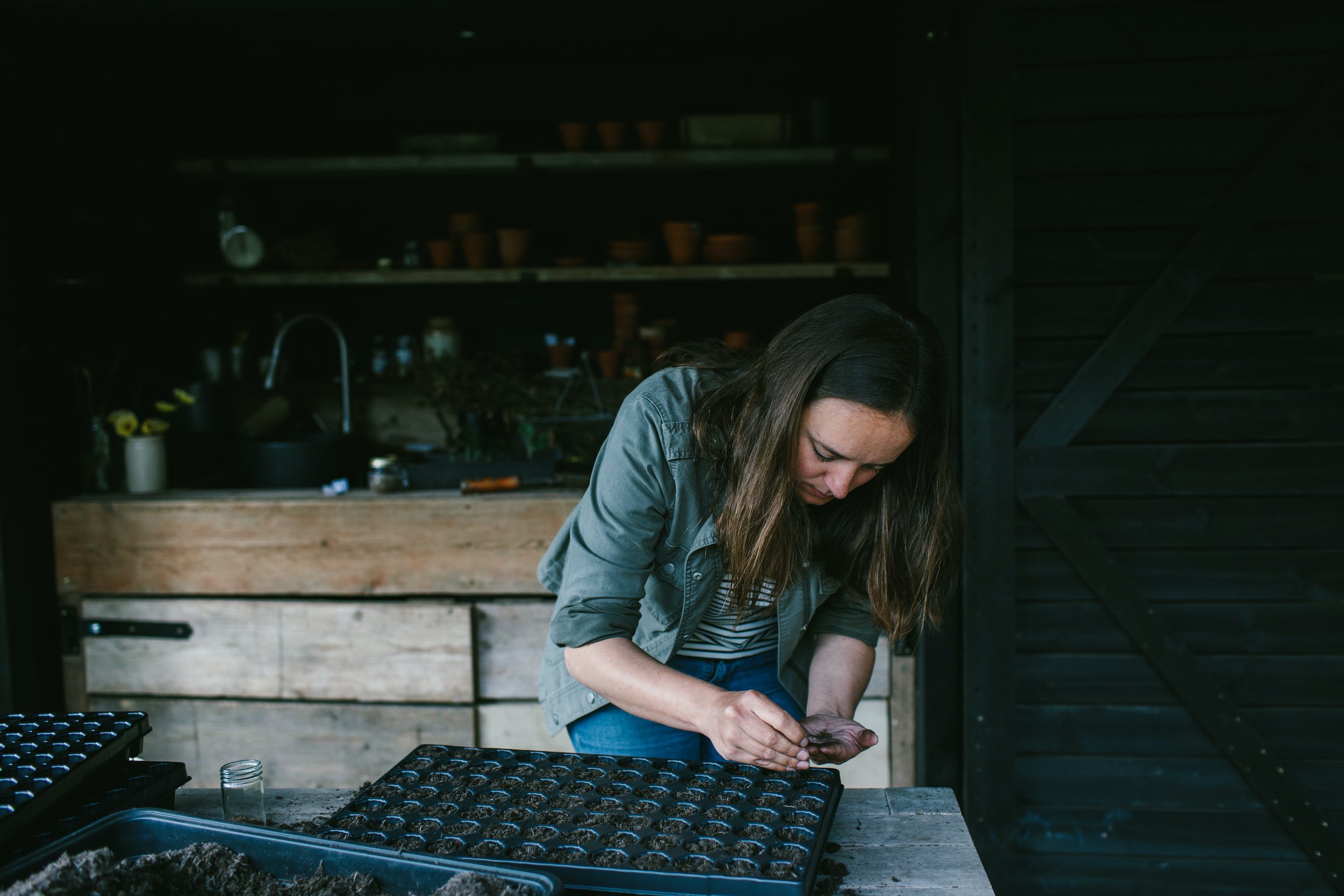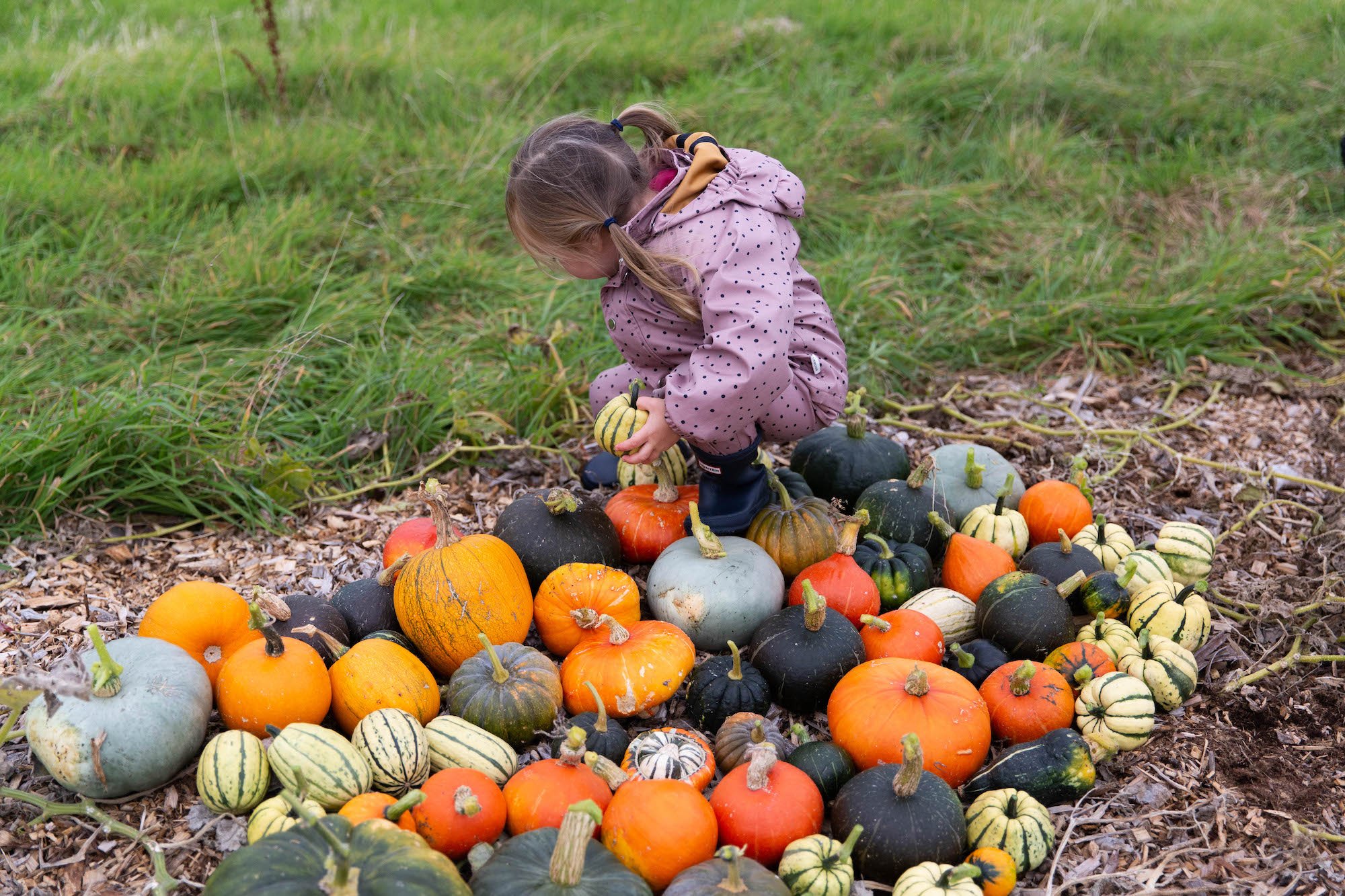Plant guide: pumpkins
With a huge amount of different varieties, minimum care needs and incredibly reliable cropping, pumpkins are a must-have in our veg growing year. From tiny cute squashes, like Baby Boo, to gigantic orange Halloween pumpkins, there is a huge choice to fit the space you have available and we love to try different ones every year…
Pumpkins are a type of winter squash, that grow from seed and produce fruits all in one growing season. The fruits are ready to harvest just in time for Halloween, when they can be decorated and – more importantly! – stored and eaten for the winter months. They’re a very reliable vegetable that need little attention beyond regular watering and feeding.
Botanical name: Cucurbita pepo
Plant type: Annual vegetable
Growing conditions:
Pumpkins grow best in a sunny, sheltered site, away from any strong winds. They need a moist and fertile soil, so it can help to dig through plenty of well-rotted organic matter before planting. They don’t do well in water-logged areas, or those with especially dry soil.
We trialled a no dig, no water woodchip mulch pumpkin patch on our land recently! You can see more about that in our growing pumpkins experiment.
Most pumpkins take up a fair amount of space, and trail outwards, as well as needing space for the fruits themselves to grow. If you want to grow the bigger varieties, you’ll need a fairly large area. If you have less space, then stick to the smaller varieties, or try out squash that can be grown upwards over supports or grown in pots.
Favourite varieties:
We have tried so many varieties of squash (take a look at our pumpkin experiment post for a full list of 2023’s choices!) and every single one so far has been delicious (with the exception of the especially huge orange Halloween varieties, like Jack O’Lantern, which looked amazing but tasted horrible!) So in our experience it is always worth experimenting with whatever looks fun! That said, these ones have been especially good in previous years:
‘Crown Prince’ – this is a really beautiful squash with a lovely blue skin, which is equally delicious to eat and stores well.
‘Uchiki Kuri’ – a small, sweet-looking orangey-red-skinned squash. It’s delicious to eat, with a nutty flavour, and easy to cook as it doesn’t need peeling. I put them into the oven whole, roast them, and then cut them in half and cut out the seeds once it is cooked. A super easy way to prep…
‘Jill be little’ – is a tiny climbing pumpkin, that will grow up supports, and can grow in small spaces and pots. The fruits are orange, small and very cute! Popular with children.
‘Baby Boo’ – another that is popular with our little one, as it has small white fruits that are perfect for Halloween decorations.
‘Anna Swartz Hubbard’ – a big green-skinned squash that stores especially well.
How to grow:
Pumpkins can easily be grown from seed, and this is the way to find the best choice of varieties. Seeds can be sown from mid-April indoors, or from mid-May direct into the ground. Starting off the seeds indoors allows them to get a head start, and you can plant out bigger seedlings once the weather is warm.
Pumpkin seeds are large, so sow seeds in individual post (around 9cm is a good size). Fill pots with multi-purpose compost and push the seeds in on their sides, about 1cm below the surface level. Water well and keep the compost consistently moist until the seeds have germinated, which usually takes around 1-2 weeks.
Keep the plants well-watered and in bright light as they grow. When the plants have around 5-6 leaves, and the last frost has passed, they are ready to plant out in the garden. Harden off for a few days first, to allow the plants to acclimatise to the outside conditions.
Plant outside around 1m apart for bush varieties, or 1.5m for trailing plants. Water well, and protect against slugs and snails, especially when the plants are still small. See our guide to planting out container grown plants for more.
Mulch around the plants once they are in the ground, to help conserve moisture levels in the soil. We place a circle of mulch around each plant — imagine a ring donut shape around the stem — to keep the water around the plant when watering.
If you have the luxury of planting pumpkins in a large patch, we’ve also found it really useful to mark where the initial plant and roots are, with a stake or marker. Pumpkins grow a long way very quickly, and it’s handy to easily check where the roots are for watering as it gets bigger.
Smaller varieties can be grown in large pots, or grow bags. Position these in a sunny spot.
Harvesting:
Plants are usually ready to harvest from late Summer to Autumn, depending on the variety. Allow the plants to ripen on the plant, and cut the top of the stem, leaving about 10cm attached to the fruit, when they are ready. Harvest all pumpkins before the first frost.
If storing over winter, leave the pumpkins to cure for a week first. Leave them on a sunny windowsill for a week before storing.
Pumpkins can store for around three months. Leave them in a dry, well-ventilated spot, spaced out so that none of the fruits touch.
Care:
Pumpkins grow a huge amount in one growing season, so they need plenty of water. Always remember to water the soil and not the plant, especially avoiding water gathering on the leaves.
Once the first fruits start to form, feed once a fortnight with a fertiliser high in potassium, to encourage the fruits to grow well. Tomato feed or similar is perfect for this.
Climbing plants may need to be tied in to any supports they are growing up.
In August, pinch out the growing tips of the shoots, in order to encourage the plant to give its energy to the developing fruits rather than the production of more leafy growth. Continue pinching out any growing ends as needed.
Developing fruits can be raised off the ground if possible, on a bed of straw, a brick, a piece of wood or even some cardboard. This helps to protect the fruits from rotting.
Climbing pumpkins may need some extra support for any heavy fruits. A piece of fabric tied underneath to act as a basket can prevent the weight of the fruit snapping the plants stems.
Uses:
Of course, one of our favourite uses for pumpkins is for Halloween! We usually carve one large pumpkin (making sure to scoop the flesh out first, so that we can cook it into a soup or a pie). For any others, we just decorate the skin of the pumpkins with black felt tip pens. It means that our little one can easily get involved with the decorating and we can just wash the skin afterwards and cook it as usual. No waste and still plenty of fun!
Some of our favourite pumpkin recipes are roasted squash soup, roast pumpkin salad, or pumpkin curry. Squashes are a super versatile staple of our winter cooking…







